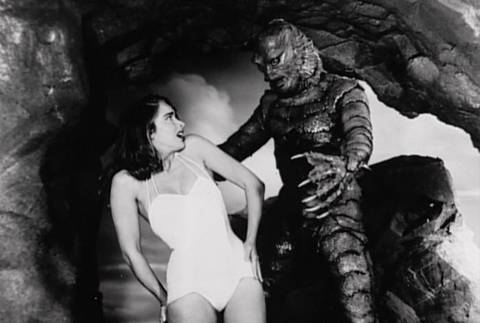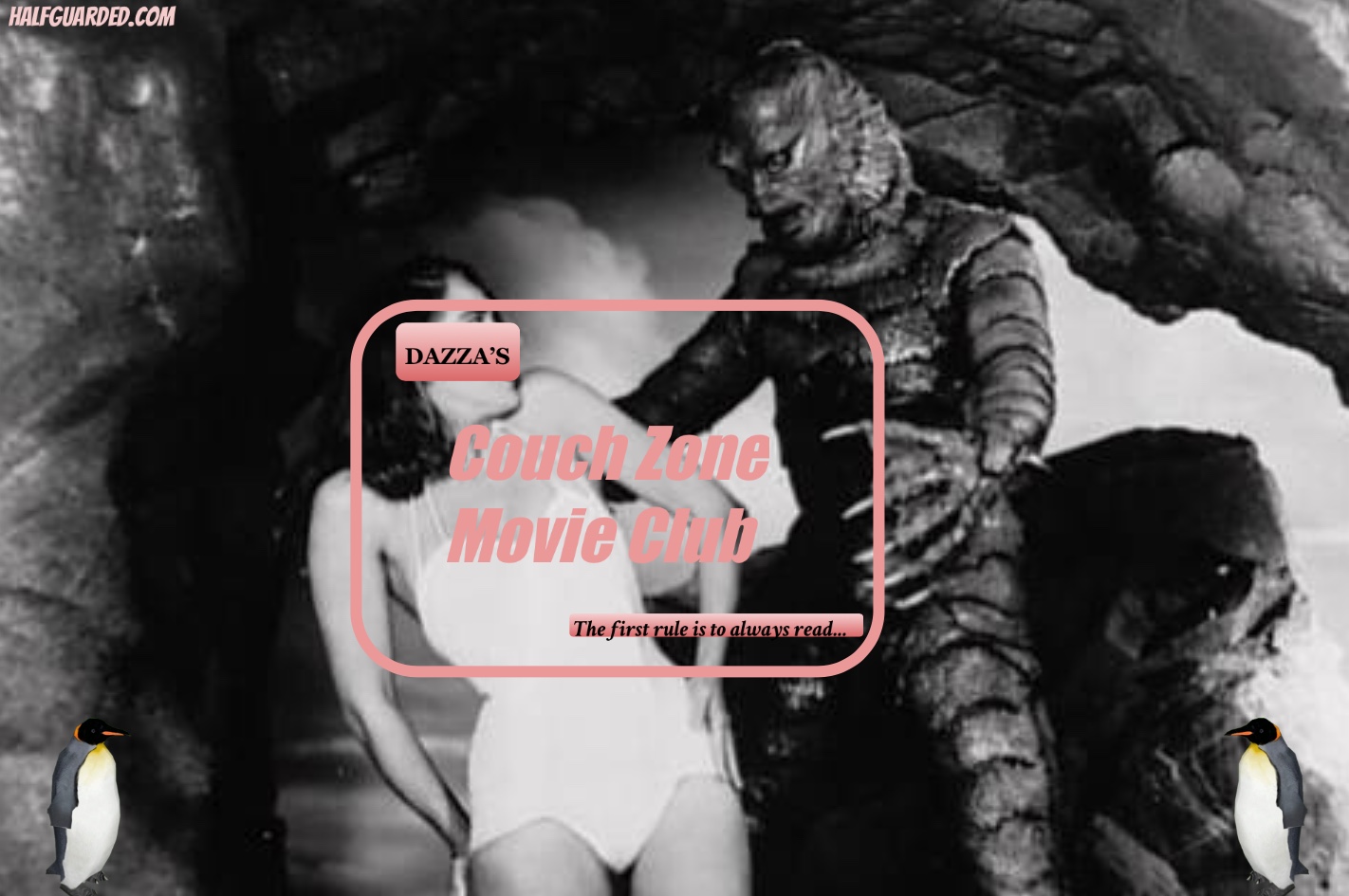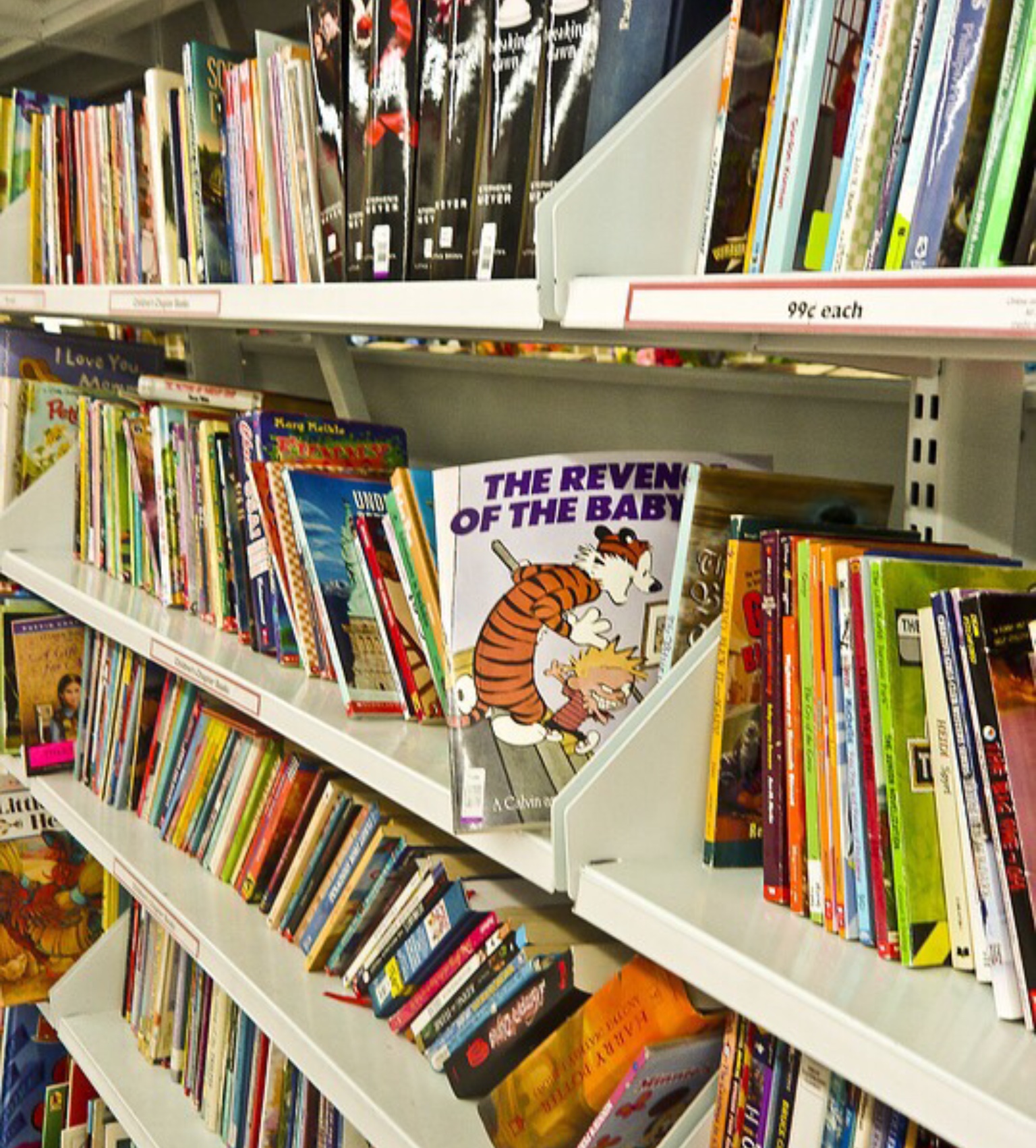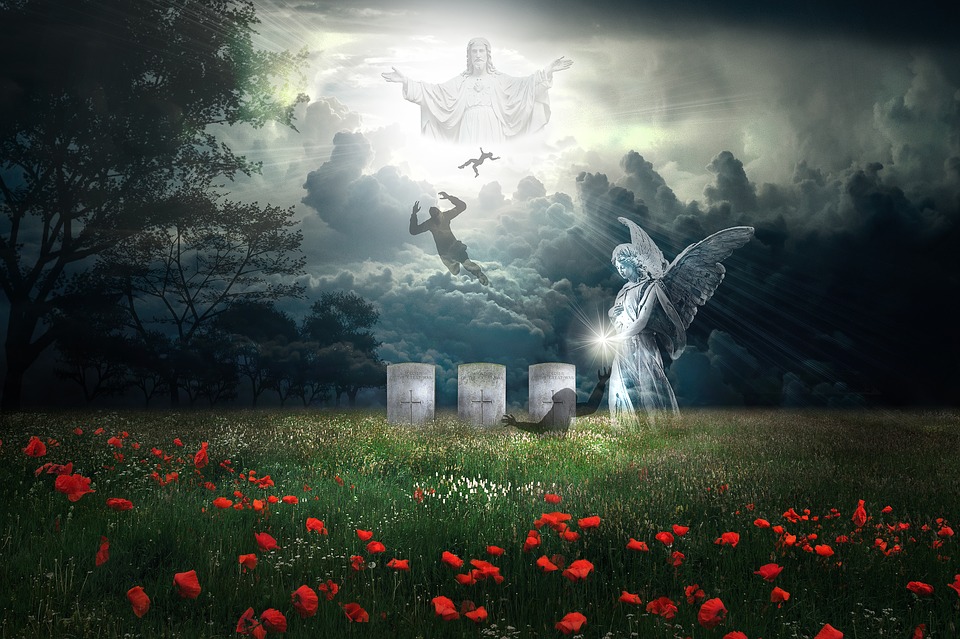Couchzone Movie Club is back, with an all new, maybe better, but definitely different format that gives me the chance to gush over some of the fabulous movies that have touched me over a lifetime of watching movies (actually I hope only half my lifetime).
From now on each instalment of Couchzone Movie Club will focus on a five year period, starting with 1950 and going up all the way to the present day. After which I’ll think of some other gimmick. From each period I will be selecting three films that I love or have had an impact on me in some way.
Adding to this I will also be choosing one “Spit my Popcorn Out” moment from the period. This can take the form of a film, scene, behind the camera story or some movie trivia that made me more “OMG!” “WTF?” or whatever you choice of anachronism is. Just something weird and whacky that made me doubt my own eyeballs the time.
So let’s a start with the 50’s a decade which saw the world moving on from the horrors of World War II as a generation of youth waited impatiently for the 60’s for all the rampant sex, drugs and great music to arrive.
1950-54
Creature from the Black Lagoon (1954)

When I think of what is the ultimate Classic Sci-Fi/Horror movie monster I think of the Creature from the Black Lagoon. Just the very title alone “Creature from the Black Lagoon” is a glorious celebration of over the top cheesy 50’s pulp sensibilities (the already balls up “Dark Universe” franchise intended to condense the title to “Black Lagoon,” for shame!). And the design of the creature (Or Gill-Man as he’s often been referred to) is a genius mix of fish and human, which has managed to become instantly recognisable as a pop culture icon, rivalling the other Universal Monsters incarnations, despite being an original creation as opposed to based on a folklore or literary legend.
Originally filmed as part of the dying fad of 3D movies, Creature from the Black Lagoon was inspired by a tale sci fi producer William Alland heard on the set of Citizen Kane about the myth of a hidden race of half man, half fish creatures residing in the Amazon River. Inspired by the tale Beauty and the Beast and in a similar way to King Kong, sees the violent monster reacting with violence to the encroachment of his land by modern man but becomes infatuated with the female species, themes that would continue throughout what would become a trilogy.
I first saw Creature of the Black Lagoon late one night on channel 4 which was once the essential station for cult movie fans in the UK through it’s dedication to classic and international off the wall movies. Having grown up watching classic black and white sci fi and monster movies I was able to overlook the dated acting and cheesy sci fi dialogue, especially in the scenes with the group of scientists gawking over a discovered skeleton arm and explaining to each other the science of marine biological evolution. Instead I was engrossed by the creature, especially in the underwater scenes and in particular a scene where it swims underneath and stalks the female scientist as she takes a swim oblivious to it’s presence.
I loved the design of “Fin Man” so much I was able to look past the guy in a costume and really buy into this as being a real creature, once scene of his head sticking out of the water breathing through his gils looked eerily spooky and oddly realistic.
I had a strange sympathy for the creature despite his violent rampages and this was to grow when a week later Channel 4 aired the sequel “Revenge of the Creature” (1955) and a week after that capped off the trilogy with “The Creature Walks among us” (1956). In “Revenge” the creature is captured by another expedition and imprisoned in a zoo where attempts are made to tame him with electric shocks. He finds himself attracted to another female scientist and when he finally escapes and runs amok I kinda rooted for the guy and felt sorry for him when he goes searching for the object of his affections.
In “Walks among us” he again is captured and this time wounded and after recovering long term on land from burns starts to undergo body changes to a more human form is able to breathe through his mouth and live on land. Again the humans try to tame him into society but in some truly sad scenes it’s clear he longs to return to his aquatic habituate. After being framed for murder by a cold, unscrupulous scientist the creature rampages again and in a touching final scene escapes to a beach and heads off towards the ocean.
Judged on it’s own “Creature from the Black Lagoon” is a fun, thrilling monster movie but together with it’s sequels plays a part in an much underrated trilogy in my opinion. There’s a real narrative in the developing story of the creature who gains in sympathy at his mistreatment at the hands of the humans, especially as they are progressively portrayed worse and worse as people from their disrespect of a species they find as lesser than them and encroaching on an environment they don’t belong in.
The “creature” has attained an iconic status, but I question how much it gets watched today and wonder how many film fans are even aware it is a trilogy. More than just a fun, scary movie franchise, with it’s environmental themes it deserves to be regarded with fresh eyes as overachieving monster saga.

Calamity Jane (1953)

Yeah, I’ve never held onto “man points” for long anyway.
Let’s be clear, this incarnation of Wild West folk heroes Calamity Jane and Wild Bill Hickcock is a billion years away from the reality of those real life characters. This ain’t HBO’s Deadwood, this is a whip crack away musical with Doris Day and Howard Keel starring in a lively, light hearted portrayal of the wild west that bombards you with glowing, happy tunes that are insidiously catchy and endearing.
I probably have my mum to thank (or blame some may say) for inflicting me with my love of musicals and this is one of the earliest I remember. Because just like with Sound of Music (and if you don’t find the nuns stealing the starter motors from the Nazi’s cars hilarious we can’t be friends) whenever it was shown on television my mum would be watching, volume dialled turned up higher than usual all the way through “Just got back from the Windy City,” and “It’s Harry I’m planning to marry.” No wonder my Dad who hates musicals went off to work in Nigeria on oil rigs for months on end.
Calamity Jane is a riot and it’s unashamedly joyful tone was infectious to me as a kid. Calamity is the loud mouth, tomboy gunfighter who due to a comedy of errors promises to bring top singing star Adelaid Adams to perform in the remote Deadwood town but walks in on the star’s maid Katie Brown singing, mistakes her for Adelaid and brings her instead. Netherless Katie wins the hearts of Deadwood and her and Calamity become best friends until the newcomer falls in love with Calamity’s “secret love” Danny.
Aside from the bundled with joy songs, there is some great comedy moments. There’s some great banter between Day and Howard Keel’s Hickock, especially when he’s forced to dress as an Indian woman in public for winning a bet. There’s a gold moment where Katie tries to have Calamity to dress like a lady and watches through a window her approaching dressed in a beautiful yellow gown and acting dainty, only for her to walk through the door covered in mud having fallen and screaming and ranting in Calamity fashion.
Watched today there are somethings that may not sit well with 21st sensibilities. You can imagine some gnawing of teeth when Calamity and Katie sing “Never under estimate a woman’s touch” while doing up Calamity’s house into a splendor of kitsch and ribbons. Also the confederate symbols and glowing references to General Lee wouldn’t fly well in today’s political climate.
However counter culture wise Calamity Jane has retained a subversive relevancy, having been adopted as a LGBT favourite. Day’s portrayal of Calamity with a tomboyish attitude and buckskin attire made her obvious appealing as a lesbian icon, especially when she has Katie move in with her. As such”Never under estimate woman’ touch” can take on a different connotation and before you tut tut at my dirty mind I got this idea from the promotional material at the Silver Rainbows LGBT film festival in Norwich.
For all the 50’s schmaltz in the film, Calamity is ahead of her time in being a strong female character. She’s an equal when it comes to drinking, shooting and joking with the men and when her beloved is captured by Indians she is the one who rides off alone to rescue him. Even after the attempts by Katie to clean up Calamity and make her more feminine, the outfits she wears while smarter still see her in trousers and on her wedding day (to Hickcock) it’s revealed she hasn’t given up carrying her gun.
Personally I think Doris Day has a misunderstood reputation for being all sweetness and light by people who’ve never actually seen any of her movies. However watch her in a film like “Don’t eat the daisies” for example and you’ll see her feisty personality and sharp humour.
Which ever way it’s watched and enjoyed Calamity is a joyous movie to watch and I’m sure I’ll be over at my mums one afternoon to watch again before long.

Shane (1953)

The first time I saw Shane was in a film studies screening, and frankly I was left unimpressed and begrudged having to sit through the whole thing. I felt like I was watching a Sunday afternoon TV movie, a dated western riddled with sentimentality. Alan Ladd didn’t convince me as gunfighter (he was no John Wayne or Clint Eastwood) and I cared little for him helping a sickly sweet family with an annoying kid and their fellow settlers against the ruthless cowboys trying to snatch their land. I cynically dismissed the whole film as gunk to be scoffed at and an example of the dying era of the classic western.
Years later I went through a western genre phase and as well as going through Hollywood’s back catalogue of famous and obscure cowboy flicks, I decided to revisit a few classics that I’d failed to appreciate on first viewing. John Wayne’s The Searchers was one film that I loved a lot more the second time around and in a complete shock Shane I admired so much more I wonder if I’d been in a foul mood on that first viewing.
Shane has a dark maturity to it, acting as a transition for the western genre, retaining the look and tone of classic cowboy movies with the themes of peaceful settlers vs evil cattlemen yet introducing a more violent element way ahead of that seen in modern and spaghetti variety. The film replaces the ping like sound of gunshots more commonly found in westerns with ones more resembling the booming blasts of a cannon. The slow, melodramatic fall found commonly when victims are shot in westerns are gone and instead we see the poor family man hammered violently into the ground by the guns of hired killer Jack Palance (who’s portrayal of the grinning Wilson is truly chilling and his bullying order “Pick up the gun!” makes him one of the most memorable Cowboy villains).

Second time around I picked up on the anti-violence undercurrent from the film (Alan Ladd was apparently not comfortable with guns or working with them) and could appreciate better Shane’s failed attempts to turn his back on his gunfighter past. Shane represents the relics of the wild west era and when he wins out and wipes out the thugs who have terrorised the villagers, he is wounded (possibly fatally) and leaves the community as he has no place in this new civilised society.
Even the kid who annoyed me so much the first time around has an important role in the story. It’s clear from Shane’s arrival that the boy is entranced by his ability to wield a gun and hero worships him more so than his own father who he badgers early on with the question “could you woop Shane in a fight!” While he is excited by the masculinity associated with gunfighting the boy is later appalled when Shane knocks out the father with a gun to stop him from riding into town to face the leader of the cattlemen in a gunfight. Although for the greater good (It’s Shane who must do the killing in order so the family can retain their innocence) the cheapshot destroys the myth of the glamour of violence that the boy was clinging to.
There’s more going on in Shane than the dated western I initially dismissed it as. It’s one of greatest, interesting and subversive of westerns from that era that holds the consequences of violence to account in a genre that traditonally glorifies it.

Spit My Popcorn out moment
Seven Brides for Seven Brothers (1954)

Seven Brides for Seven Brothers was another favourite of my mums which she watched religiously whenever it aired but that I’d somehow avoided ever watching. That changed when I had a couple of friends round for a musical marathon and wine and pizza night to shred the few man points I’d accumulated watching Anderson Silva break his leg one UFC.
Borrowing my mum’s DVD copy we sat down to watch a film that failed to get us singing along as we were busy looking at each other going “what the fuck?” at the direction the film took in the second half of the film.
It starts all naively 50’s with Howard Keel riding into town in order to find himself a wife declaring “Bless your beautiful hide, where ever you may be, we ain’t met but I can see you’re the girl for me!”
The beautiful Hide in question turns out to belong to Milly who jumps at the chance to marry red headed, bearded Howard Keel within minutes of meeting him. What Milly doesn’t realise until she gets to Howard’s cabin is that her new husband has six, red headed, bearded brothers at home who are all hot tempered louts and she’s going to be expected to cook and clean for.
Rather than getting the hell out of Dodge, Milly takes it on herself to help these yobbos get themselves cleaned up and teach them how to behave with manners in order to better their chances in finding themselves some nice ladies to marry (and in doing so get them to fuck off and move out so her and Keel can have the house to themselves). The cleaned up lads try out Milly’s lessons at a good old fashioned barn raising where they meet six lovely lasses, but their chances are spoiled when get drawn into a brawl with the locals.
So far it’s a fairly innocent, endearing 50’s musical story. But then things take a very weird turn.

Pinning for the girls they earlier met the six brothers take matters into their own hands, sneak into town and kidnap the objects of their affection and on their way out causing an avalanche behind them to stop the townsfolk from pursuing. Long story short by the time Winter has passed and the fathers of the girls (who must be fearing the worst by now) are able to mount a rescue bid the young ladies have fallen in love with their captors and pretend to be pregnant to save the brothers being justifiably lynched and marry them instead.
Me and my friends were stunned in an amused “What hell?” sort of way and could only assume 50’s audiences weren’t so sensitive to kidnapping back them. Although from the reaction of one of my friends I got the impression if someone was going to be kidnapped into being a wife they could do a lot worse than be kidnapped by brother Ben.
Glorification of Stockholm syndrome aside, “Seven Brides for Seven Brothers” (based rather tellingly on a book titled “The Sobbing Women” which was in turn based on the legend “The rape of the Sabine Women”) left me cold as a musical. Aside from the catchy intro where Howard Keel blesses those beautiful hides, I found the songs mostly bland with those sung by Jane Powell I found particularly off putting, her opera singing style not really geared towards the musical numbers I generally enjoy. The sombre number with the brothers moping after the girls came across as especially weird and melancholic.
Seven Brides is a curious film and my advice to any lonely men out there is not to take this film to heart. You’ll no doubt end up in trouble with the law as kidnapping a girl to get her to fall in love with you is not the way to go. It took the words of a Judge to make me realise that and to this day I’m still not allowed to come 100 feet of Anna Kenderick.
Anyway til next time when I present the films of 1955-59,
See ya
Dazza





